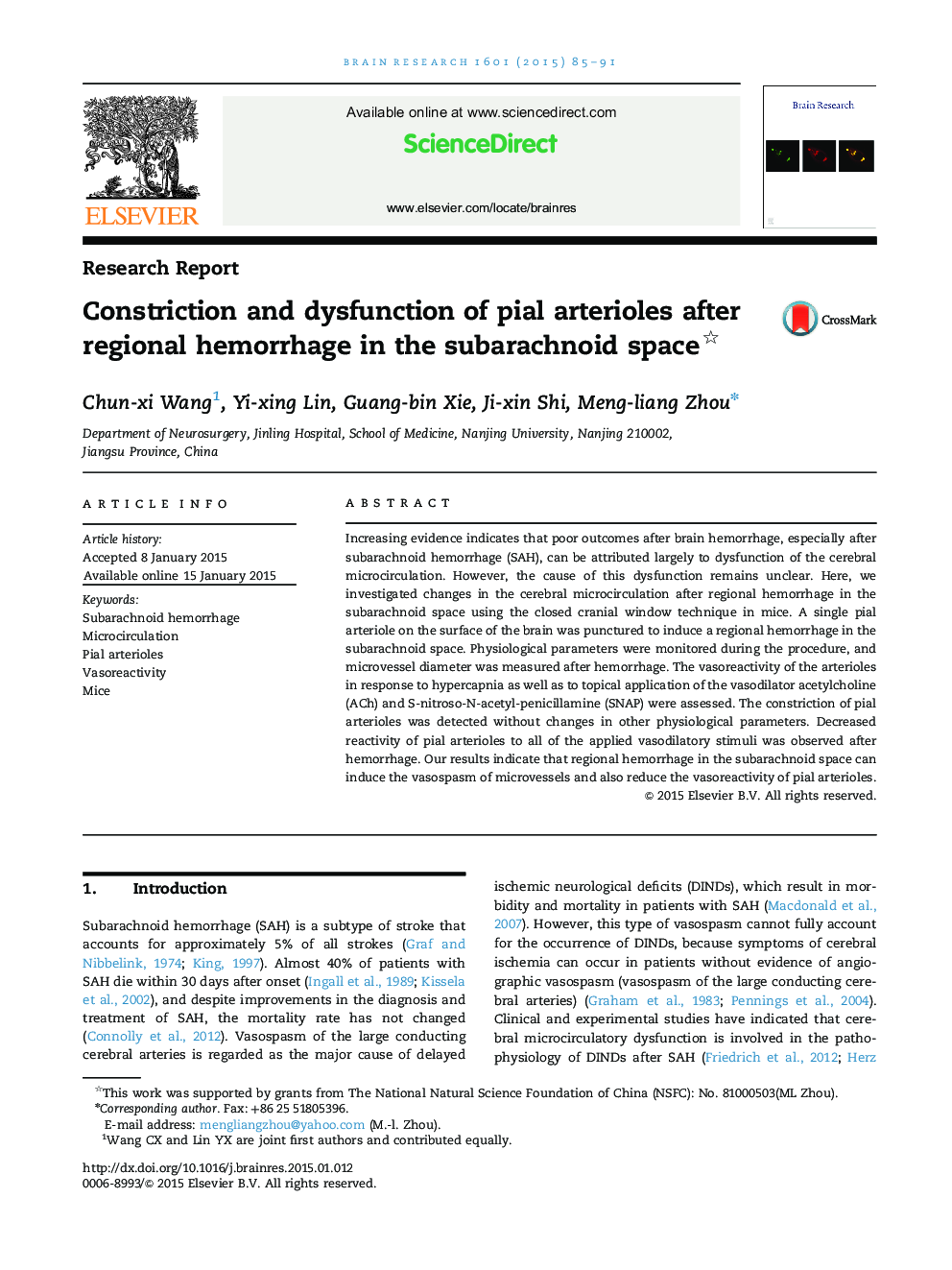| Article ID | Journal | Published Year | Pages | File Type |
|---|---|---|---|---|
| 6263161 | Brain Research | 2015 | 7 Pages |
â¢Subarachnoid hemorrhage induces constriction of pial arterioles but not venules.â¢Pial arteriole reactivity to hypercapnia was decreased after hemorrhage.â¢Pial arteriole reactivity to vessel responses to vasodilators was also decreased.
Increasing evidence indicates that poor outcomes after brain hemorrhage, especially after subarachnoid hemorrhage (SAH), can be attributed largely to dysfunction of the cerebral microcirculation. However, the cause of this dysfunction remains unclear. Here, we investigated changes in the cerebral microcirculation after regional hemorrhage in the subarachnoid space using the closed cranial window technique in mice. A single pial arteriole on the surface of the brain was punctured to induce a regional hemorrhage in the subarachnoid space. Physiological parameters were monitored during the procedure, and microvessel diameter was measured after hemorrhage. The vasoreactivity of the arterioles in response to hypercapnia as well as to topical application of the vasodilator acetylcholine (ACh) and S-nitroso-N-acetyl-penicillamine (SNAP) were assessed. The constriction of pial arterioles was detected without changes in other physiological parameters. Decreased reactivity of pial arterioles to all of the applied vasodilatory stimuli was observed after hemorrhage. Our results indicate that regional hemorrhage in the subarachnoid space can induce the vasospasm of microvessels and also reduce the vasoreactivity of pial arterioles.
